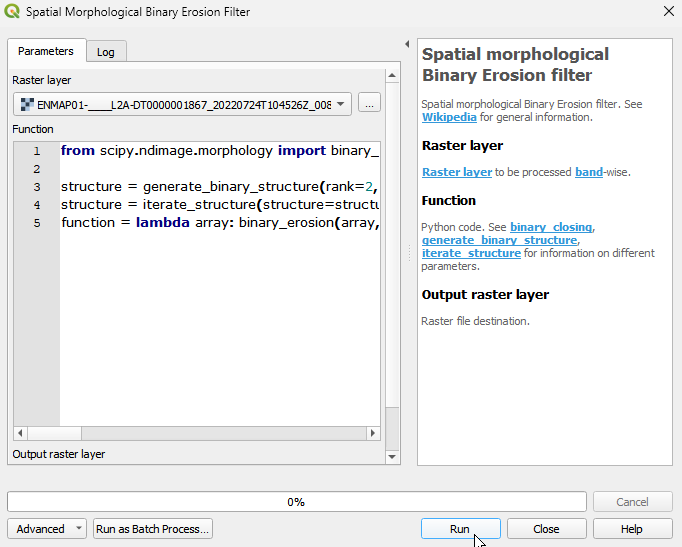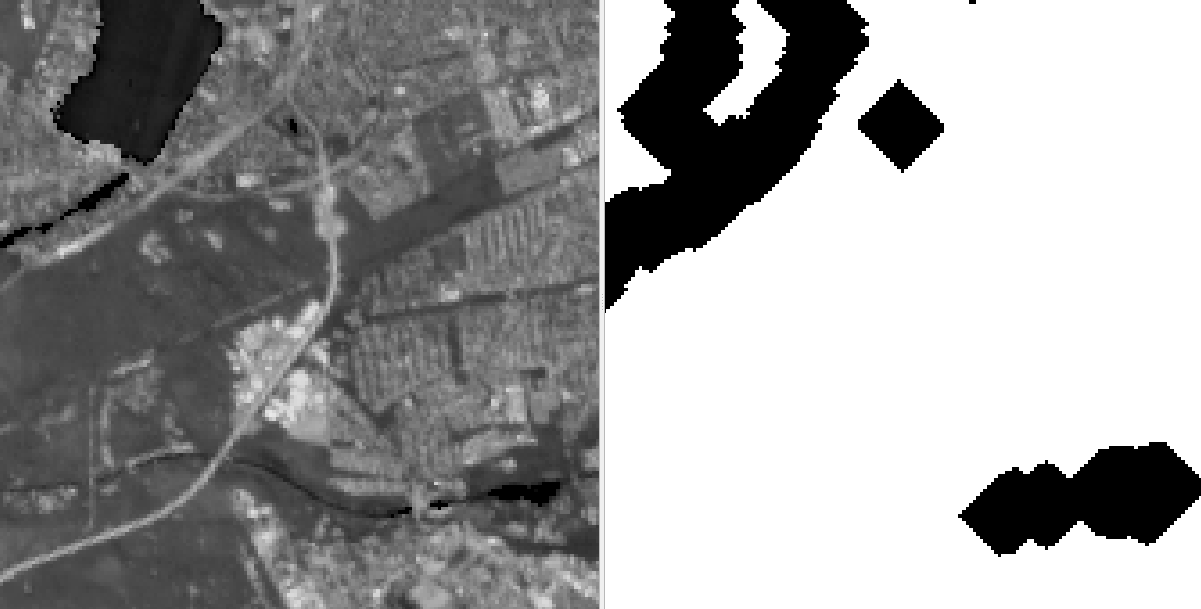Spatial morphological Binary Erosion filter
Spatial morphological Binary Erosion filter. See Wikipedia for general information.
The spatial morphological binary erosion filter shrinks or erodes regions of 1 pixels in a binary image. The filter operates by moving a structuring element, which is a predefined shape such as a square or a circle, across the binary image. The structuring element defines the neighborhood around each pixel that will be considered during the erosion operation.
For each pixel in the image, the erosion filter checks if all the 1 pixels within the structuring element are present. If only 1 pixels are found, the filter sets the corresponding pixel in the output image as 1. In other words, the filter removes or erodes regions of 1 pixels that do not meet the criteria of the structuring element.
When applying this algorithm to continous image data, the input will be binarised.
Usage:
Start the algorithm from the Processing Toolbox panel.
Select the raster to process and modify the parameterization if necessary, then click run.

Processed image in comparison to the original.

Parameters
- Raster layer [raster]
Raster layer to be processed band-wise.
- Function [string]
Python code. See binary_closing, generate_binary_structure, iterate_structure for information on different parameters.
Default:
from scipy.ndimage import binary_erosion, generate_binary_structure, iterate_structure structure = generate_binary_structure(rank=2, connectivity=1) structure = iterate_structure(structure=structure, iterations=1) function = lambda array: binary_erosion(array, structure=structure, iterations=1)
Outputs
- Output raster layer [rasterDestination]
Raster file destination.
Command-line usage
>qgis_process help enmapbox:SpatialMorphologicalBinaryErosionFilter:
----------------
Arguments
----------------
raster: Raster layer
Argument type: raster
Acceptable values:
- Path to a raster layer
function: Function
Default value: from scipy.ndimage import binary_erosion, generate_binary_structure, iterate_structure
structure = generate_binary_structure(rank=2, connectivity=1)
structure = iterate_structure(structure=structure, iterations=1)
function = lambda array: binary_erosion(array, structure=structure, iterations=1)
Argument type: string
Acceptable values:
- String value
- field:FIELD_NAME to use a data defined value taken from the FIELD_NAME field
- expression:SOME EXPRESSION to use a data defined value calculated using a custom QGIS expression
outputRaster: Output raster layer
Argument type: rasterDestination
Acceptable values:
- Path for new raster layer
----------------
Outputs
----------------
outputRaster: <outputRaster>
Output raster layer